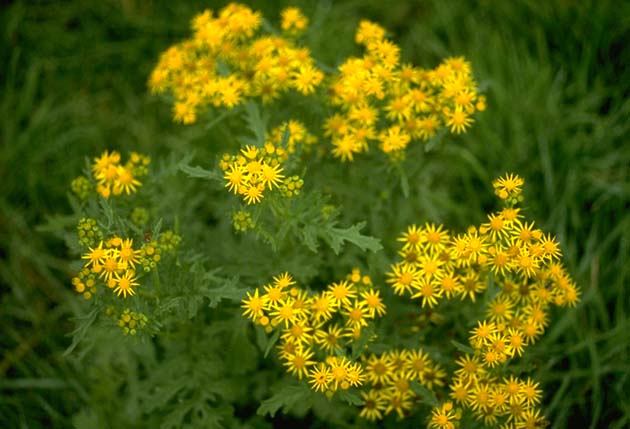Dermatitis: solar
Synonym(s): Photosensitization, Light sensitization
Introduction
- Phototoxicity - a dose-related response to ultraviolet (UV) light → sunburn.
- Photosensitivity - increased vulnerability to the effects of UV light due to sensitization by various agents, eg hepatotoxins/ingested compounds, contact chemicals.
- Cause: exposure to sunlight +/- presence of photodynamic agents in the skin.
- Signs: erythema, vesicle formation and sloughing of skin, especially depigmented and hairless areas
 .
. - Diagnosis: clinical signs and investigation of etiology.
- Prognosis: dependent on cause, poor in chronic liver disease Liver disease: overview .
- See also urticaria and angiedema Urticaria / angiedema .
Presenting signs
- Erythema, crusting, weeping and necrosis of unpigmented or light colored skin exposed to sunlight.
- Comedones.
Geographic incidence
- Altitude - intensity of UV increases with elevation.
- Hours of sunlight - most intense in middle of day.
- Locations with phototoxic plants.
- USA:
- Lalium perenne(perennial rye grass).
- Australia:
- UK :
- Hypericum perforatum(St John's wort)
 .
. - Rape.
- Clover.
- Ragwort (Seneciospp) Toxicity: pyrrolizidine alkaloid

 .
.
- Hypericum perforatum(St John's wort)
Pathogenesis
Etiology
Phototoxicity- Excessive exposure to UV light.
- Unpigmented or light-colored skin.
- Lack of hair cover.
Photosensitisation - Systemic or contact agents.
- Ingestion of photosensitising plants:
- Liver disease Liver disease: overview :
- Ingestion of hepatotoxic plants (pyrrolizidine alkaloids, helianthron pigments, furocoumarins), eg ragwort,Seneciospp Toxicity: pyrrolizidine alkaloid

 ;Medicago polymorpha(burr medic, burr trefoil).
;Medicago polymorpha(burr medic, burr trefoil).
- Ingestion of hepatotoxic plants (pyrrolizidine alkaloids, helianthron pigments, furocoumarins), eg ragwort,Seneciospp Toxicity: pyrrolizidine alkaloid
- Chronic liver disease:
- Reduced hepatic excretion of phylloerythrin (endogenous photodynamic agent).
- Photosensitisation occurs in 25% of horses with hepatic dysfunction.
- Oral, parenteral drugs, eg tetracylines Oxytetracycline , chlorothiazides Etorphine hydrochloride , sulfonamides .
- Topical drugs.
Drug-induced photosensitisation may be long-lived, even after discontinuation of the drug
Infectious - Dermatophilus Dermatophilosis .
Predisposing factors
General- Liver disease Liver disease: overview .
Specific
- Drug therapy.
- Access to photosensitizing or hepatotoxic plant species.
- Underfeeding/poor grazing available → horses eat weeds.
Pathophysiology
Phototoxicity- Excessive exposure to UV → epithelial cells absorb light energy → release of cytokines from epithelial cells → dilation of peripheral vessels, plasma leakage + mast cell degranulation → increased tissue histamines, inflammatory agents, free radicals and vasoactive compounds → inflammation with erythema and swelling.
Photosensitivity - Photodynamic agent in epithelium + exposure to sufficient UV + lack of melanin and haircoat allowing cutaneous absorption of UV radiation → photosensitization.
Diagnosis
Subscribe To View
This article is available to subscribers.
Try a free trial today or contact us for more information.
Treatment
Subscribe To View
This article is available to subscribers.
Try a free trial today or contact us for more information.
Prevention
Subscribe To View
This article is available to subscribers.
Try a free trial today or contact us for more information.
Outcomes
Subscribe To View
This article is available to subscribers.
Try a free trial today or contact us for more information.
Further Reading
Publications
Refereed papers
- Recent references from PubMed and VetMedResource.
- Pilsworth R C & Knottenbelt D (2007) Photosensitisation and sunburn. Equine Vet Educ 19 (1), 32-33 VetMedResource.
- Singh R P (1970) A case of photosensitization in a horse. Indian Vet J 47 (5), 450-451 PubMed.
Other sources of information
- McKenzie R A (1994) Equine Opthalmology, Plant Toxicology and Maximizing Performance. Proc 16th Bain Fallon Memorial Lectures. pp 1-43 (good overview of plant toxicities plus reference list).
- Stannard A A (1987) Photoactivated Vasculitis. In: Current Therapy in Equine Medicine. 2nd edn. Ed: Robinson N E. W B Saunders, USA. pp 646-647.